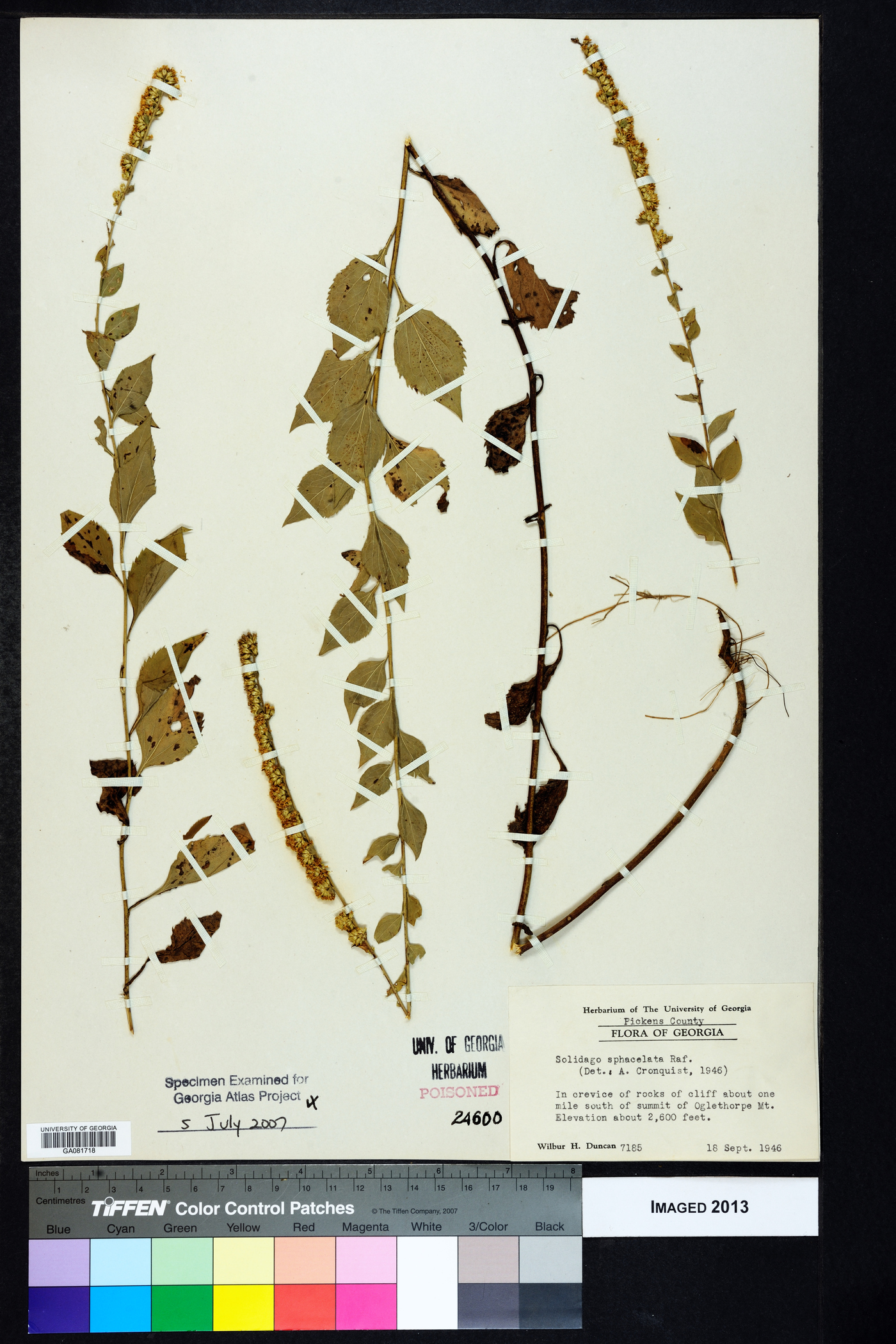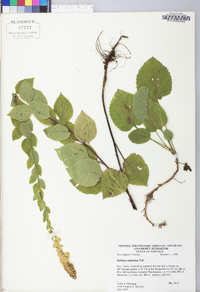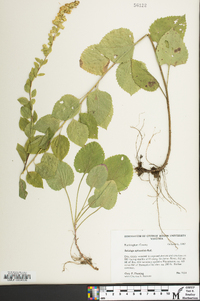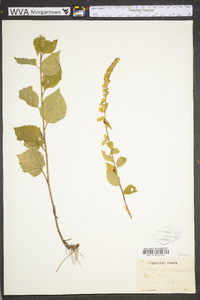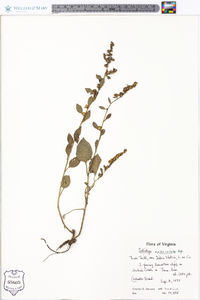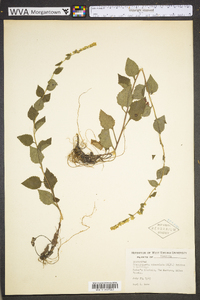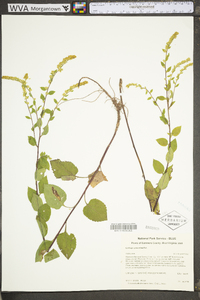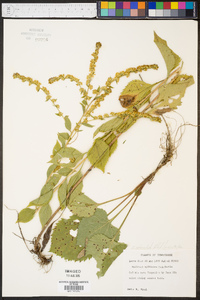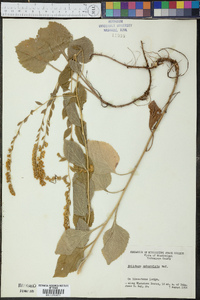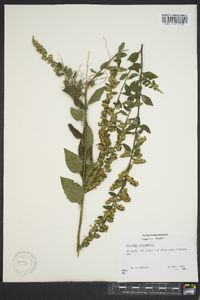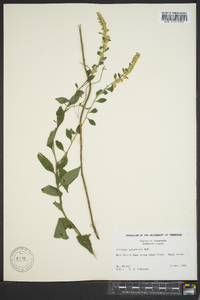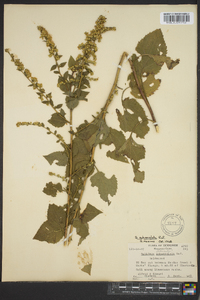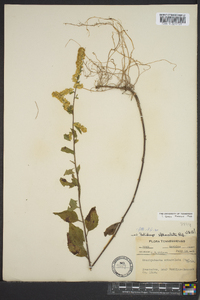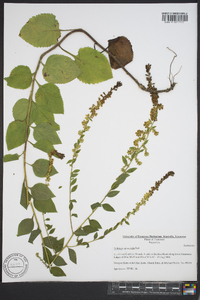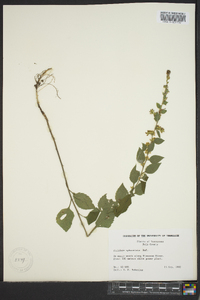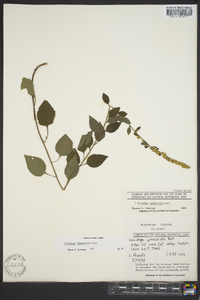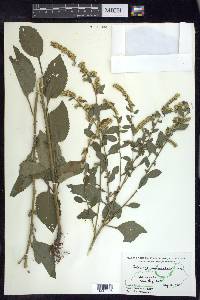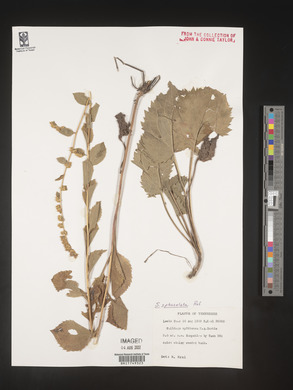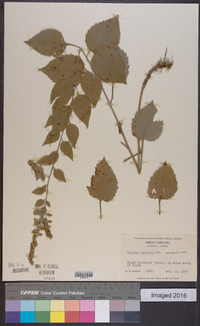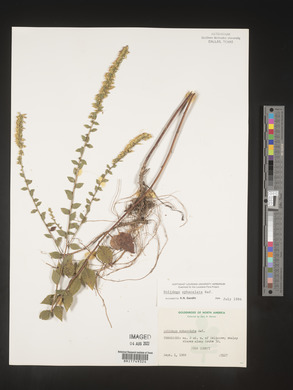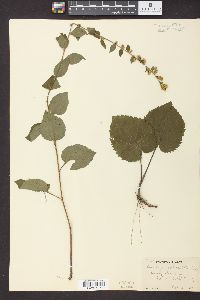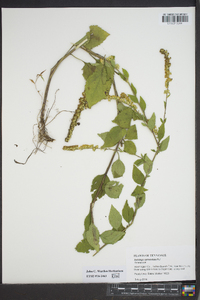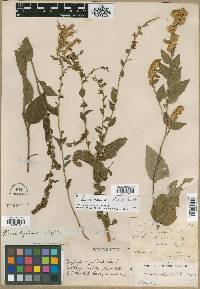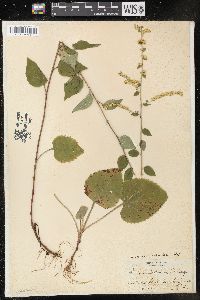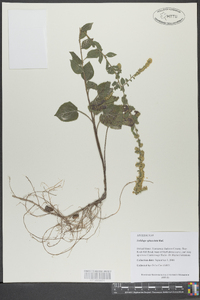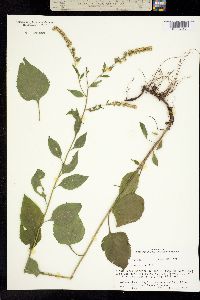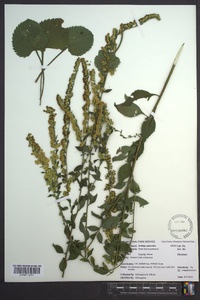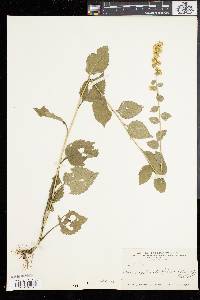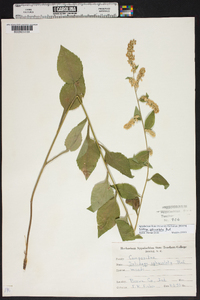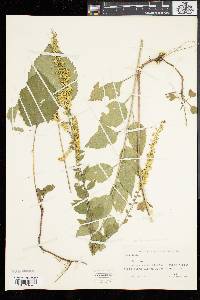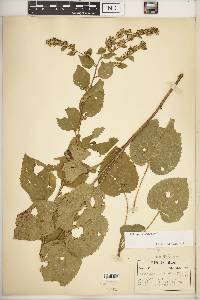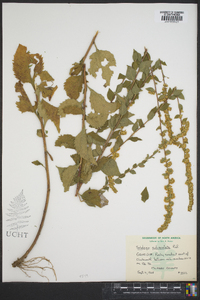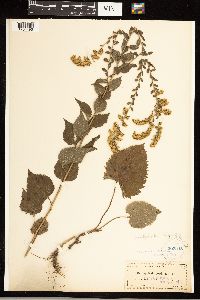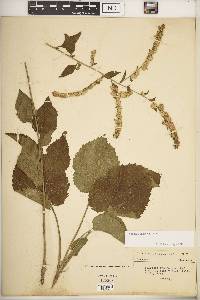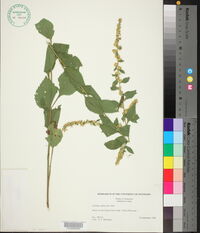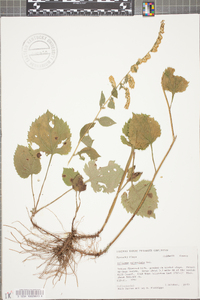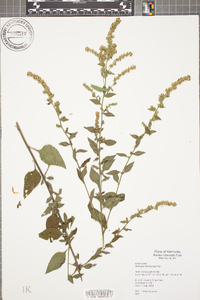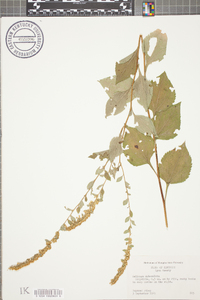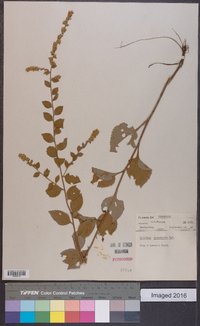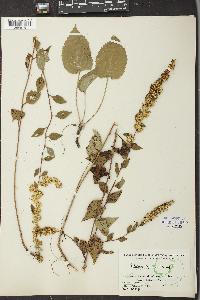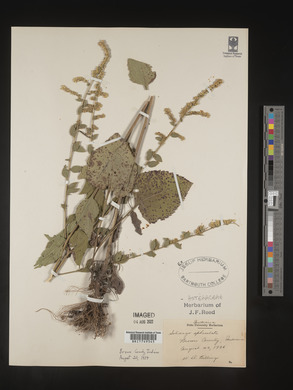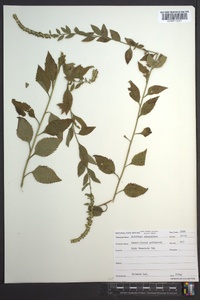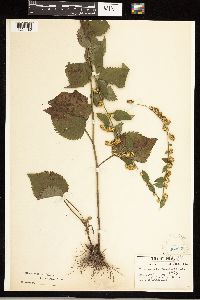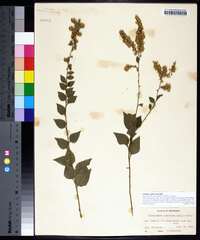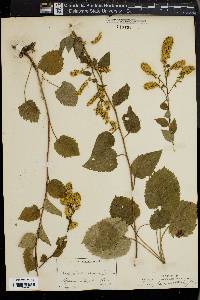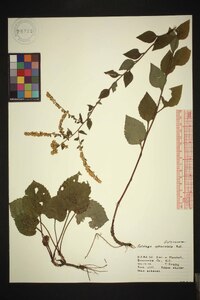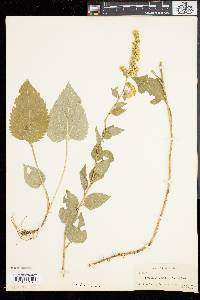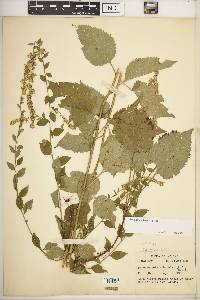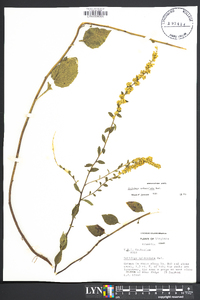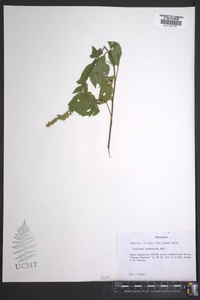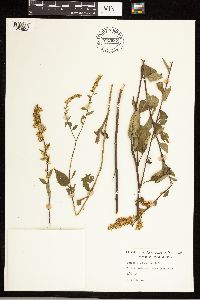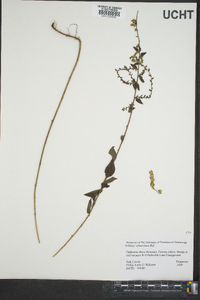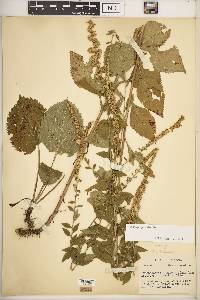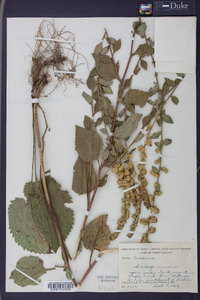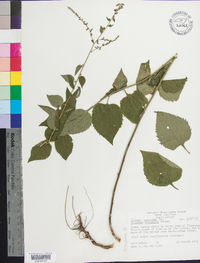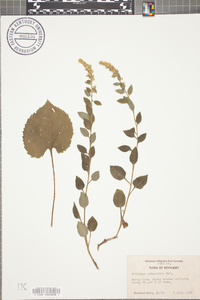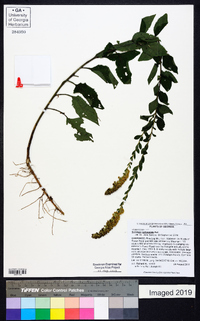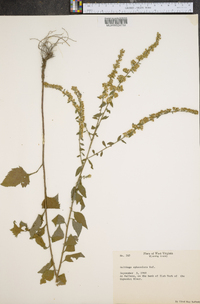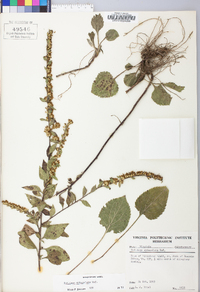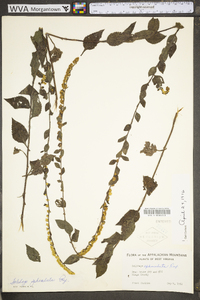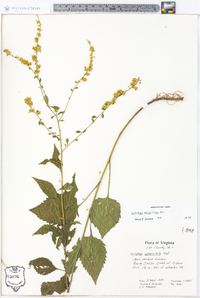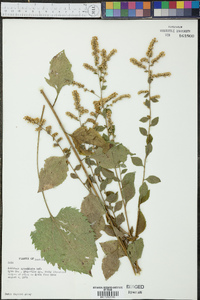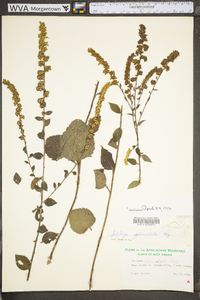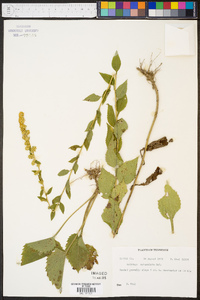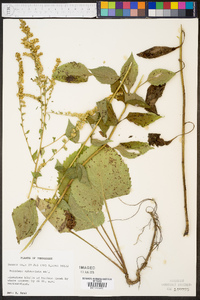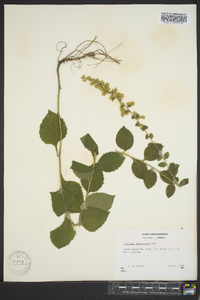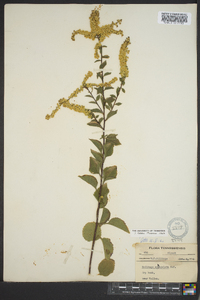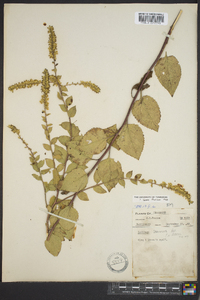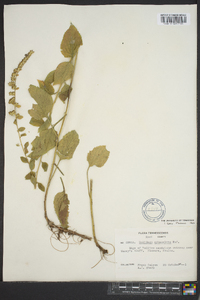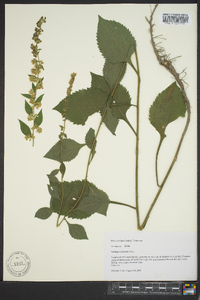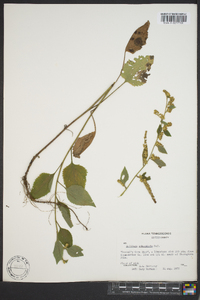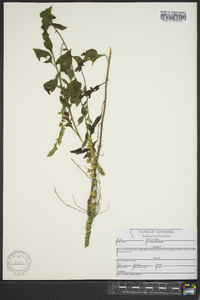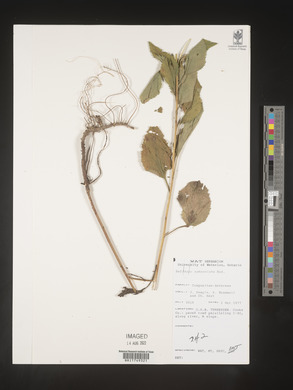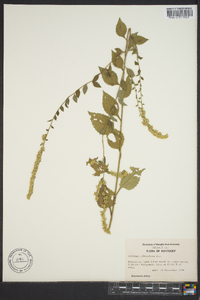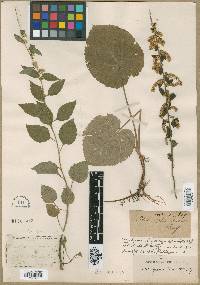
|
|
|
|
Family: Asteraceae
Autumn Goldenrod
[Brachychaeta sphacelata Britton, moreSolidago cordata Short & Peter] |
Plants 50-120 cm; rhizomes short, caudexlike or somewhat elongate. Stems usually 1, ascending to erect or arching, densely spreading-puberulent to occasionally subglabrous. Leaves: basal (rosettes) present at flowering, conspicuously petiolate, petioles slightly winged distally, to 100 mm, blades cordate, 40-120 × 40-110 mm, margins coarsely sharp-serrate, apices acute to acuminate, abaxial faces moderately to densely spreading-puberulent, adaxial sparsely so or glabrate; mid and distal cauline progressively reduced, less petiolate, blades ovate to lanceolate, less cordate distally, 40-60 × 20-30 mm, margins finely serrate. Heads 50-250, densely crowded, often subglomerate, in secund paniculiform arrays, proximal branches few, widely spreading, secund, elongate, distal short, recurved. Peduncles 0-1 mm, sparsely hispido-strigose, bracteoles 1-4, lanceolate-ovate, grading into phyllaries. Involucres narrowly campanulate, 3-4.5 mm. Phyllaries in 2-3 series, ovate, strongly unequal, outer somewhat keeled, firm, margins ciliate. Ray florets 3-6; laminae ca. 1 × 0.5-0.7 mm. Disc florets 3-6; corollas 2-2.5 mm, lobes 0.75-1.2 mm. Cypselae 1-2 mm, sparsely short-strigose; pappi ca. 0.5 mm (forming many-bristled crown on longer cypselae). 2n = 18. Flowering (Jul-)Aug-Sep(-Oct). Open woods and rocky places, especially in calcareous soil, mountains and adjacent eroded plateaus; 100-1000+ m; Ala., Ga., Ill., Ind., Ky., Miss., N.C., Ohio, Tenn., Va., W.Va. The vernacular name false goldenrod comes from the erroneous assignment of the species to the genus Brachychaeta rather than to Solidago, where it belongs.
Stems 5-12 dm from a short and caudex-like to somewhat elongate rhizome, densely spreading-puberulent to occasionally subglabrous; lvs basally disposed, ±densely spreading-puberulent beneath, sparsely so or more often glabrous above, the basal ones tufted and persistent, conspicuously petiolate, with serrate, cordate blade 4-12 נ4-11 cm, the cauline ones progressively reduced, less petiolate, and less cordate; infl paniculiform, with a few widely spreading, secund branches, the narrow heads densely crowded and often subglomerate; invol 3-4.5 mm, its bracts firm, somewhat keeled, shortly green-tipped; rays 3-6, short; disk-fls 3-6; pappus-bristles firm, reduced, much shorter than the hairy achenes; 2n=18. Open woods and rocky places, especially in calcareous soil; Va. to Ga. and Ala., w. to Ill. and w. Ky. and Tenn. (Brachychaeta s.) Gleason, Henry A. & Cronquist, Arthur J. 1991. Manual of vascular plants of northeastern United States and adjacent Canada. lxxv + 910 pp. ©The New York Botanical Garden. All rights reserved. Used by permission. From Flora of Indiana (1940) by Charles C. Deam Restricted mostly to the unglaciated region where it is usually found in poor clayey soil on the crests and slopes of ridges and on the tops of high banks along streams. I have had this goldenrod in cultivation many years and I regard it as the most beautiful of the genus in our area. In good clay loam it grows to a height of about three feet with many long spreading or recurving branches. It begins to flower about the middle of September and continues until killing frost. It self sows in exposed soil but I have never found it as an escape although no effort has been made to prevent it. I am keeping this species in the genus Solidago because it is known to hybridize with Solidago ulmifolia and I do not like bigeneric hybrids. …… Indiana Coefficient of Conservatism: C = 8 Wetland Indicator Status: N/A |
This project was made possible in part by the Institute of Museum and Library Services [MG-70-19-0057-19].
Powered by Symbiota

